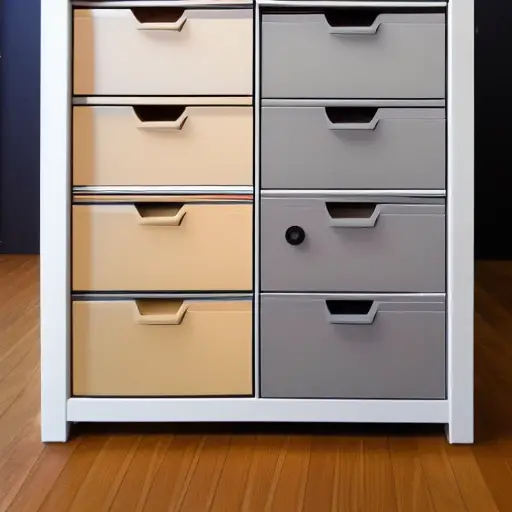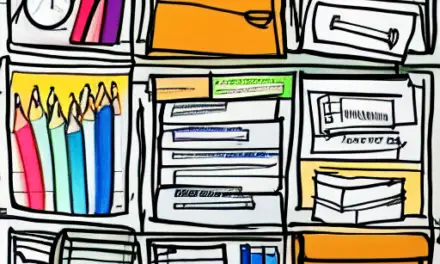There are several ways to organize a filing cabinet. The first step is to de-clutter. Once you have a clear idea of what you want to store, create a filing system. Once you have a system, keep it simple and organized. You can always re-sort your paperwork as needed.
Decluttering before putting paperwork in a filing cabinet
Before you put paperwork into a filing cabinet, take a look at all the papers you currently have. You’ll likely need to sort through old files, so go for the ones that contain dates. Grab the whole file, not just a few pages. Make sure you know how long to keep different kinds of papers.
Next, decide what kind of filing system you’ll need. Some people use a date-based system, while others prefer alphabetical. Whatever system you choose, you’ll want a filing cabinet that accommodates your system. You can also choose a cabinet that allows you to add files easily.
The best way to declutter before putting paperwork in a filing cabinet is to purge unnecessary papers. Some papers will become useless over time, such as old bills, bank statements, and property records. New papers will come along that will have more value to you.
Another way to declutter before putting paperwork in a filing cabinet is to gather all paperwork in one place, such as a room with lots of open space. This will allow you to sort through everything quickly. Start by identifying the common locations in your home where paperwork tends to accumulate. Once you’ve located the common places where you keep paperwork, gather them all into one place and sort them. If you have a large table, you can put the piles on it.
Creating a filing system
When organizing your filing cabinet, you must create a filing system that will make it easier for everyone to find their documents. This system should also be user-friendly and adaptable, so that you can easily add and remove files. Here are some tips to help you create an efficient filing system.
First, label each file. Make sure that the labels are consistent and easily readable. For example, if you have files pertaining to clients, you should label them as “client files.” In addition, if you have different types of files, consider color-coding your files to help them stand out.
You can also label each drawer with its own name to make it easier for you to find certain documents. You can also label the drawers with broad topics, such as Company Administrative, Contracts, Agreements, and so on. Make sure that everyone in the office knows how everything is labeled and where it is.
The second step in organizing your filing cabinet is to create a filing system. A filing system is an organized way of keeping your documents in an organized and accessible manner. It’s a bit like laying out the framework of a house, only you’re constructing the structure of your own cabinet. You can make a system that is simple or as detailed as you need to. But remember that it doesn’t need to be complex.
Once you have a file system in place, you must make a list of all the documents in each drawer and make sure that everything is categorized appropriately. If you need to keep a document for a longer period of time, put it on the top shelf of the filing cabinet. If you need a shorter period of time, place it on a lower shelf.
Keeping it simple
The first step in organizing a filing cabinet is to identify the paperwork that needs to be filed. You can create a list by labeling each file with the name of the person or company that owns it. Then, place that information in the appropriate folder. You can also label the file using a label maker, if you prefer.
Another way to organize the files is to organize them by month. This will make it easier to find documents, as you won’t need to rummage through several folders looking for one document. For example, if you receive a billing statement once a month, you can store it in the appropriate month.
Next, you need to create a system for locating your documents. This system can be as simple or complex as you wish. Just make sure you choose a system that works for you. You should be able to find the document you need easily. To get started, make a list of all of the files in your filing cabinet.
Another way to organize your files is to use a combination of hanging folders and regular folders. You can create a single hanging folder with a label for “Auto” and smaller regular folders with specific labels. By using a combination of these two storage options, you can ensure that your files remain in the cabinet instead of a drawer.
When organizing a filing cabinet, you need to consider which files are frequently accessed and which ones aren’t. Files that you use the most often should be placed close to your workspace. Other files may need to be stored for a longer period of time. In addition, you should think about accessibility for employees with disabilities. Tall cabinets may be difficult for them to reach.
Keeping it organized
The first step in keeping a filing cabinet organized is to develop a filing system. This is like creating a blueprint for a new house: a general system for storing all types of files. The system doesn’t have to be elaborate. The important thing is that you can find your files easily.
Next, label your files. You can do this by writing the name of each file in colored pen or using a label maker. Labeling your files properly is important because you don’t want to be looking through paperwork without knowing which box it belongs to. Once the file folders are labeled, you can file the files in either reverse chronological order. You might even prefer to keep the oldest bills at the top.
Organizing your files requires time and effort. After you’ve separated your files into categories, divide them into three piles. These piles are Ongoing Need, May Need Someday, and Discard. It’s important to be honest with yourself about which files you don’t need anymore.
Keeping a filing cabinet organized can be a challenge, especially if you have multiple users. The key is to pick a system that works for you. Color coding systems work well, as do labels and tape. However, labelling the files themselves may take more time. Keeping a filing cabinet organized can increase productivity and efficiency.
Keeping a filing cabinet organized is not only important but it can reduce your stress levels as well. The frustration and stress associated with searching for documents can lead to negative feelings. These feelings can affect the entire office. A filing cabinet can provide a secure place for all of your important files.
Using a combination of regular and hanging folders
One of the best ways to organize a filing cabinet is to use a combination of regular and hanging folders. This way, you can separate the types of documents into specific categories. For example, you can store financial records in the bottom drawer of your cabinet, while storing legal papers in the upper drawer. To make it easy to find files, label each hanging file with the category it belongs to.
The difference between regular and hanging file folders is that the former sit inside the drawer, while the latter hangs on the edge. This makes them easier to remove. However, they are less stable and may fall over. Hanging folders also keep the documents upright.
Regular and hanging folders come in different styles and colors. The size and orientation of the tabs is important. Some people like to have the tabs in a straight line, while others prefer the ability to see the labels at a glance. Both types of file folders are available in office supply stores or online.
Apart from using regular and hanging folders for your file cabinet, you can also use fabric covered boxes. These can be useful if you have empty wall space. They can be used to store subcategories. Choosing a variety of file boxes makes it easier to keep track of your important documents.
Before you begin organizing your filing cabinet, you need to determine your filing system. This is your blueprint for organizing your files. It can be general or detailed – it’s up to you. However, you don’t need to use an elaborate system if you can make it simple.












